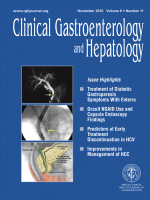
Celiac.com 11/15/2010 - Fermentation of wheat flour with sourdough lactobacilli and fungal proteases decreases the concentration of gluten in wheat. Depending on the level of hydrolyzation, gluten levels can be reduced as low as 8 parts per million.
A team of researchers recently conducted a small study to assess whether people with celiac disease can eat baked goods made with wheat flour that is hydrolyzed via sourdough lactobacilli and fungal proteases during food processing.
Celiac.com Sponsor (A12):
The team included L. Greco, M. Gobbetti, R. Auricchio, R. Di Mase, F. Landolfi, F. Paparo, R. Di Cagno, M. De Angelis, C. G. Rizzello, A. Cassone, G. Terrone, L. Timpone, M. D'Aniello, M. Maglio, R. Troncone, S. Auricchio.
They are affiliated with the Department of Pediatrics and European Laboratory for the Study of Food Induced Diseases, University of Naples, Federico II in Naples Italy.
The team evaluated the safety of daily administration of baked goods made from this hydrolyzed form of wheat flour for patients with celiac disease.
Patients who volunteered for the study were assigned at random to consume 200 grams per day of baked goods from one of three groups. The did so every day for 60 days.
The first group of six patients ate natural flour baked goods (NFBG), with a gluten content of 80,127 ppm gluten.
The second group of 2 patients ate baked goods made from extensively hydrolyzed flour (S1BG), with a residual gluten content of 2,480 ppm.
The third group of patients ate baked goods made from fully hydrolyzed flour (S2BG), with just 8 ppm residual gluten.
In the first group, two of the six patients consuming baked goods made with natural flour (NFBG) discontinued the challenge because of adverse symptoms. All six patients in this group showed increased levels of anti-tissue transglutaminase (tTG) antibodies and small bowel deterioration.
The two patients who ate baked goods made from extensively hydrolyzed flour (S1BG) had no clinical complaints, but biopsy showed intestinal damage in the form of subtotal villous atrophy.
The five patients who ate baked goods made with made from fully hydrolyzed flour (S2BG), at just 8 ppm residual gluten had no clinical complaints. Also, they showed no increase in anti-tTG antibodies, and Marsh grades of their small intestinal mucosa showed no adverse change.
Evidence with this small 60-day dietary study shows that people with celiac disease can safely consume baked goods made from fully hydrolyzed wheat flour, manufactured with sourdough lactobacilli and fungal proteases. This flour shows no toxicicity to patients with celiac disease.
The team notes that a combined analysis of serologic, morphometric, and immunohistochemical parameters is the most accurate method to assess new therapies for this disorder.
The results need to be borne out by further study, but, in the future, baked goods made with fully hydrolyzed wheat flour, manufactured with sourdough lactobacilli and fungal proteases may become another option for people with celiac disease.
Source:
-
Open Original Shared Link





Recommended Comments